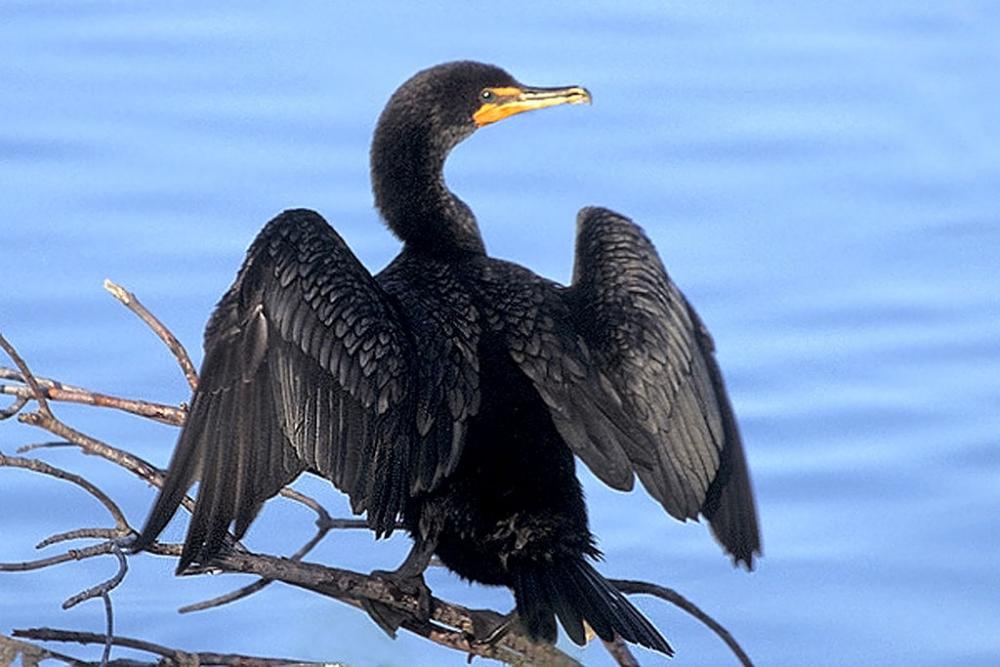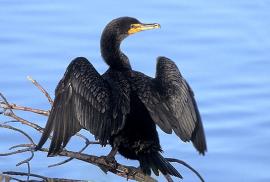Guide to Boreal Birds
Overview
In the East, except in the Northeast in winter and along the Gulf Coast, the Double-crested is the only cormorant likely to be seen. In the West, it is the only cormorant that nests commonly in the interior. Along the Pacific coast, where it nests on cliffs, it is usually outnumbered by Brandt's Cormorant. It takes some practice to pick out the crook in the neck of a Double-crested, but once this field mark is spotted, distinguishing the two is easy. Double-crested Cormorants often take shortcuts over land, whereas both Brandt's and the smaller Pelagic nearly always fly over water. Despite years of persecution by fishermen who viewed it as a competitor, the species is currently increasing in number and expanding its range. Like geese, cormorants migrate in large arcs or in wedge-shaped flocks, but are silent when flying. The word "cormorant" is derived, through French, from the Latin corvus marinus, or "sea crow."
Description
30-35 (76-89 cm). A solidly built black cormorant with orange throat pouch and long neck. Long hooked bill tilted upward when bird swims. Adults have short tuft of feathers over each eye during breeding season. Young birds are browner, whitish or buffy on breast, upper belly, and neck. In flight, the neck shows a slight crook, not seen in the similar Brandt's Cormorant, the larger Great Cormorant, or the smaller Neotropic.
Voice
Deep guttural grunts.
Nesting
3-5 chalky, pale blue-green eggs in a well-made platform of sticks, or of seaweed on the coast, placed in a tree or on a cliff or rocky island. Nests in colonies.
Habitat
Lakes, rivers, swamps, and coasts.
Range/Migration
Breeds locally in interior from Alaska, Manitoba, and Newfoundland south to Mexico and Bahamas. Winters mainly on coasts, north to Alaska and southern New England.



